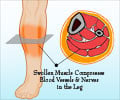Ketorolac Medication Information
Learn everything you need to know about Ketorolac-pronunciation, uses, dosage guidelines, indications, and when to take or avoid it.
Get up-to-date information on side effects, precautions, warnings, and proper storage to ensure safe usage.
Explore Ketorolac brand names commonly used in India and internationally, along with detailed pricing information. Consult your healthcare provider for tailored medical advice.
Generic Name : Ketorolac Pronunciation : KEE-toe-ROLE-ak ICD Code : Y45.3 Therapeutic Classification : AnalgesicsBrand Names or Trade Names of Ketorolac
India :
International :
Toradol, Sprix, Toradol Iv/Im, Toradol Im Acular, Acuvail, Acular Ls, Acular Pf
Why is Ketorolac Prescribed? (Indications)
This medication is a non-steroidal anti-inflammatory agent (NSAID), prescribed for short-term management of severe pain, usually after surgery that requires analgesia (pain killer) at the opioid level and free from opioid side effects. It stops the body's production of substances (prostaglandin, histamines etc) that cause pain, fever and inflammation.When should Ketorolac not be taken? (Contraindications)
Contraindicated in patients who are allergic to aspirin or other NSAIDs, gastrointestinal bleeding, kidney or liver disease, asthma, dehydration, pregnancy, lactation. Do not give postoperatively to patients with high risk of bleeding.What is the dosage of Ketorolac?
Adult: Oral- Moderate to severe pain 10 mg 4-6 hourly. Max: 40 mg/day. Max duration: 7 days.IV/IM -Moderate to severe pain 60 mg via IM injection or 30 mg via IV injection.
Ocular itching- As 0.5% solution: Instill 1 drop 4 times/day. Post-operative eye inflammation as 0.5% solution: Instill 1 drop 4 times/day for 2 weeks, starting 24 hours after surgery for 2 weeks.
How should Ketorolac be taken?
It comes as a tablet to be taken by mouth. It is usually taken every 4 to 6 hours on a schedule or as needed for pain.It also comes as eye drops to instill into the affected eyes, as directed by your physician.
What are the warnings and precautions for Ketorolac?
•It may make you drowsy or dizzy. Do not drive a car or operate machinery until you know how this medication affects you.Do not drink alcohol while taking this medication.
Caution should be exercised in patients with history of heart failure, predisposition to reduced blood volume or kidney blood flow might lead to mild kidney disease; monitor kidney function closely, elderly, weight above 50 kg, liver dysfunction.
What are the side effects of Ketorolac?
Most Common- Rash, ringing in the ears, headache, dizziness, drowsiness, abdominal pain, nausea, diarrhea, constipation, heartburn and fluid retention.Body as a Whole- Swelling in limbs, weight gain, fever, infections, weakness and hypersensitivity reactions.
Heart- High blood pressure, palpitation, pallor, syncope, low blood pressure and flushing.
Skin- Itching, rash, necrosis, life threatening allergic reactions, scaling and hives.
Gastrointestinal- Nausea, indigestion, gastrointestinal pain, diarrhea, constipation, flatulence, gastrointestinal fullness, vomiting, mouth ulcer, rectal bleeding, eructation, loss of appetite, increased appetite, peptic ulceration, gastrointestinal bleeding and perforation, blood in stool and acute inflammation of pancreas.
Blood- Bruising, nose bleed, anemia and eosinophilia.
Central Nervous System- Headache, drowsiness, dizziness, sweating tremors, abnormal dreams, hallucinations, emotional state, involuntary movements, vertigo, tingling, depression, sleeplessness, nervousness, excessive thirst, dry mouth, abnormal thinking, inability to concentrate, over active, stupor convulsions, psychosis and brain inflammation.
Respiratory- Difficulty in breathing, pulmonary edema, runny nose, cough, asthma and bronchospasm.
Eye and ENT- Abnormal taste, abnormal vision, blurred vision, tinnitus and hearing loss.
Genitourinary - Blood in urine, protein in urine, decreased urination, urinary retention, increased urinary frequency, flank pain with or without blood and/or nitrogen in urine, inflammation of kidney and hyponatremia (low level of sodium concentration in serum when compared to the normal levels).
Liver- Liver failure and jaundice.
Potentially Fatal- Anaphylaxis, severe skin reactions, heart attack, stroke and gastrointestinal bleeding.






